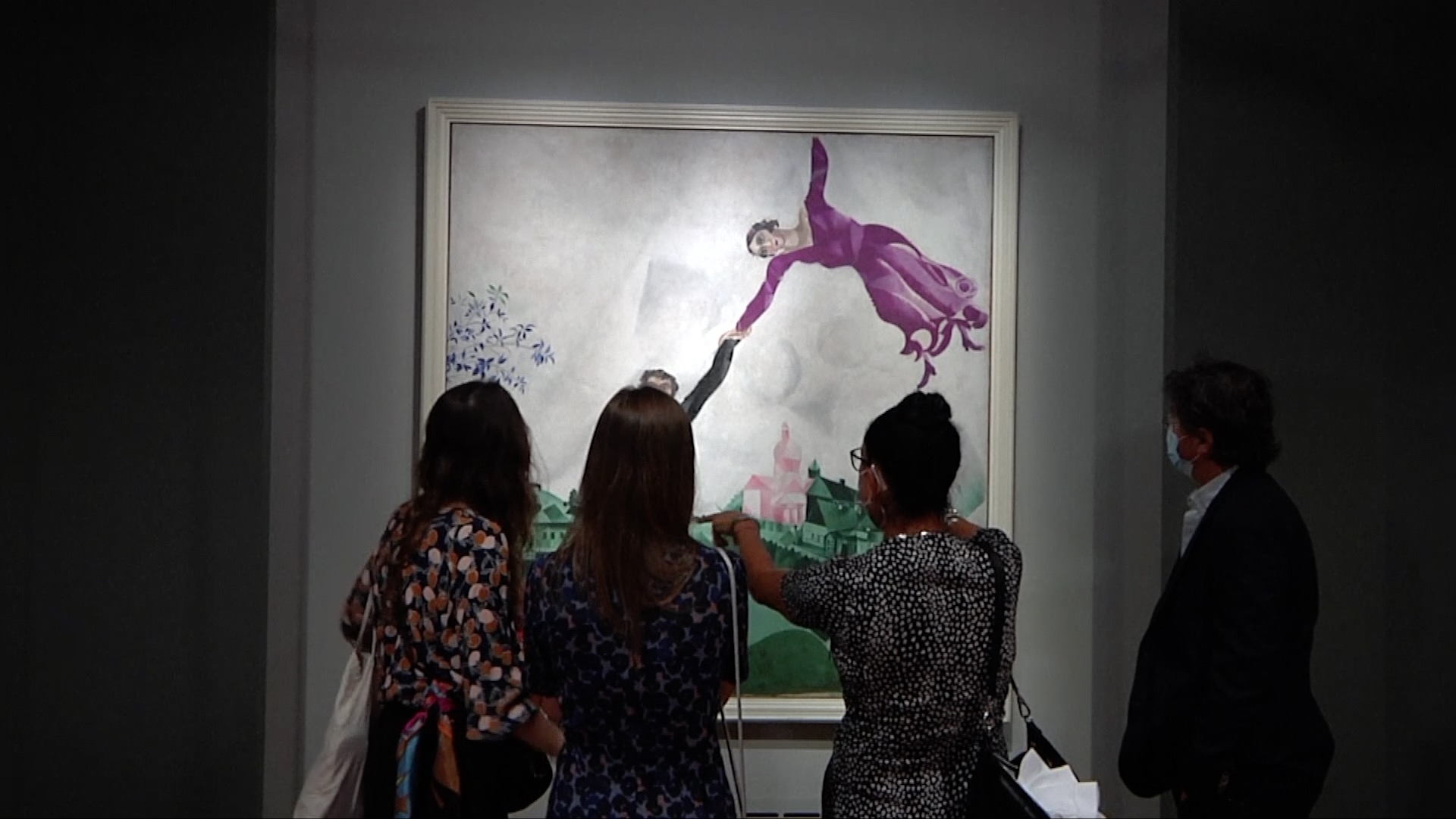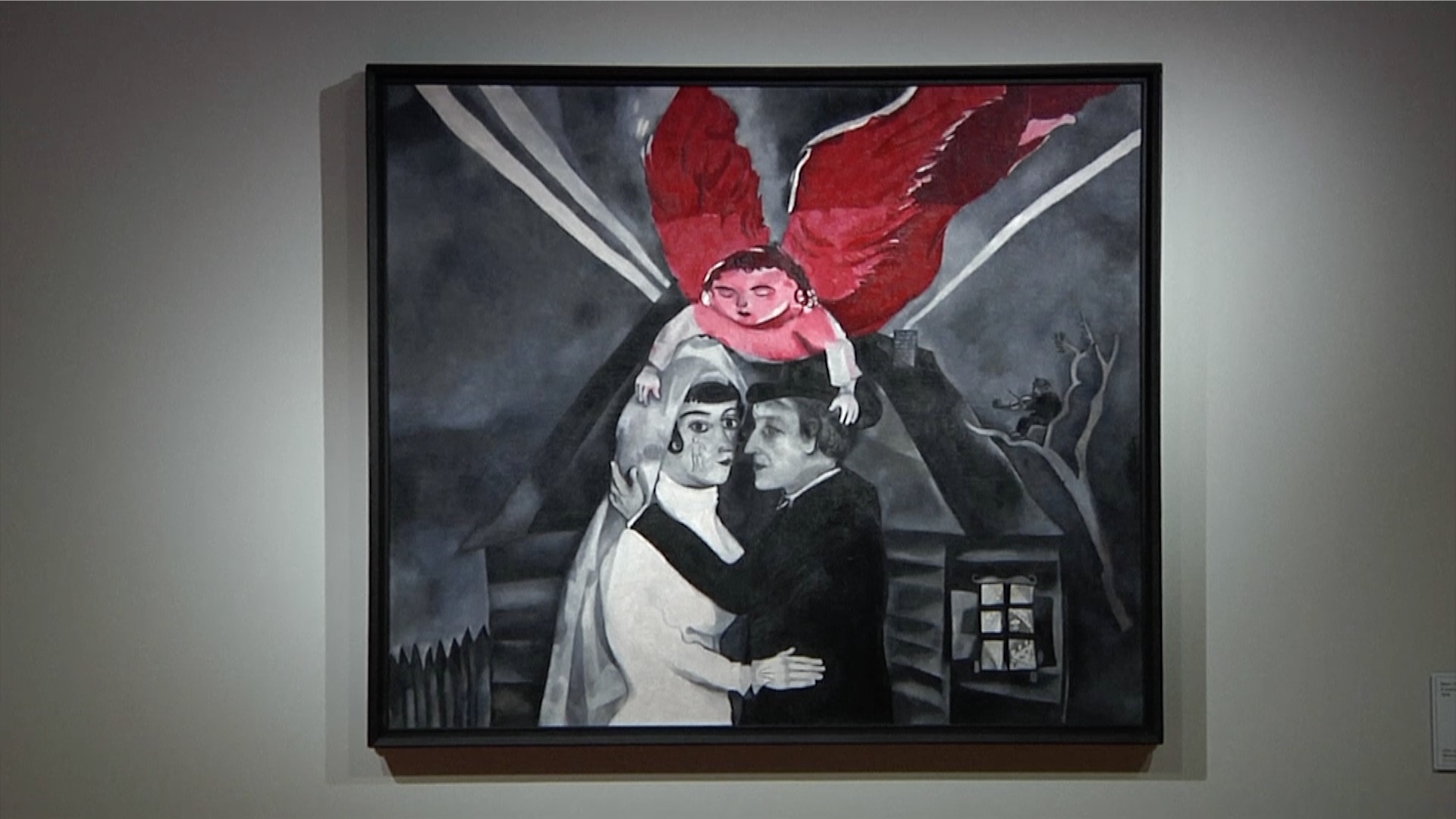01:56

The strange and whimsical world of the Russian-French artist Marc Chagall is opening in Italy's Palazzo Roverella in Rovigo. Titled "My Russia will love me too," the exhibition might shed some light on where his unusual artistic style came from.
Meret Meyer, Chagall's granddaughter, said he was deeply influenced by Russian art.
"We are pushed to discover links that are suggested, without being able to confirm that Chagall was actually inspired by specific iconographies. But, of course, this is an artistic universe, the icons, the lubki (Russian woodblock prints), that all artists from the Russian avant-garde were soaked in the same way. Chagall then used them as vocabulary that he brought along with him and within him as if they were natural extensions of him like the paintbrush, like the color pallet, " Meyer said.
The exhibition includes bird maidens, or sirens from Russian mythology and folklore to give visitors a taste of the type of popular illustrations Chagall was exposed to.

"The Wedding" by Marc Chagall (1918). /AP
"The Wedding" by Marc Chagall (1918). /AP
Curator Claudia Zevi also chose to organize the exhibit by the symbolism of the paintings.
"We saw the theme of the roosters, the rooster in the Russian culture is the one that marks dawn, the warrior. But in the Jewish culture, it is the animal that is sacrificed the day before Yom Kippur, so the victim... There is also the pendulum, an object present in all the Jewish homes, but it is also an image that represents the apocalypse," she said.
"We separated these elements and I believe the result is a new reading of his works that forces us to stop and look at each individual piece to look for specific elements rather than looking at pieces quickly, one after the other following chorological or historical guidelines," Zevi said.
Meyer believes that by examining the different symbols in her grandfather's paintings, visitors to the gallery can glimpse the magical quality of his work.
The exhibition runs until January 17, 2021.
(With input from AP)